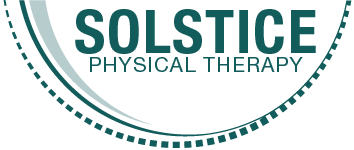Does pregnancy have to be painful?
The answer to this question is obviously yes – there are going to be random aches, pains, twangs, zips and zaps of pain. A baby is growing and the surrounding tissues are expanding, the relaxin hormone is coursing through the body and allowing the joints to increase their mobility and the weight of the baby is changing spinal curvature and pressing in the bladder, lungs and shifting internal organs. But…many women experience other pains, such as sciatica, sacroiliac and pelvic pain, low back pain and other discomforts that can be treated both before and after giving birth.
I often hear that women feel that pain just comes along with pregnancy and there is nothing that they can do about it until after they have had the baby. This is definitely not true! As a physical therapist, I have many techniques to help women decrease their discomfort – especially if the pain is caused by muscles, joints and nerves. Treatments aim to support and stabilize joints and reduce pressure on nerves and can include: specific exercises to help improve pelvic floor, abdominal, pelvic and leg strength; education about options for support bracing; hands-on joint and muscle therapy; and education for positioning and movements to avoid in order to support and stabilize the joints and reduce pressure on the nerves.
Pelvic floor and abdominal strength are very important for many reasons and it’s never too late to start working on it no matter where you are in your pregnancy. “Kegel” exercises are not the only way to engage the pelvic floor muscles, and even though many people have been advised to complete “Kegels” they aren’t sure of how exactly to complete the muscle contraction, how long to hold the muscle contraction or how many repetitions are needed to improve strength. Physical therapists with education in pre- and post-natal physical therapy can give very specific instruction to help people complete pelvic floor strengthening effectively while still being careful depending on what stage of pregnancy or post-birth they are in.
Physical therapists can also perform tests to determine if someone would benefit from use of bracing – such as a sacroiliac belt or abdominal binder (post-natal). They can provide a variety of options and give education for proper wearing and support.
Physical therapists perform many hands-on techniques to release tight muscles, improve joint alignment and decrease overall joint and muscular stress and strain.
Often, women are getting into positions and doing activities throughout the day that are contributing to their pain. Physical therapists are very good at educating women in positions to avoid, use of pillows to decrease pain, ways to bend and move and walk in order to decrease pain and discomfort. As a private, in-home therapist, I can analyze the home environment to determine what changes can me made to improve the pregnancy and post-natal experience.
If you are pregnant or have been pregnant in the past and are experiencing pain in your back, pelvis and legs or are experiencing incontinence – you don’t have to deal with it! Contact a local physical therapist to find someone who specializes in pre- and post-natal therapy so that you can enjoy every aspect of the birthing experience.
Dr. Lisa Wilcox, Solstice Physical Therapy, can be contacted through her website www.SolsticePhysicalTherapy.com or email at info@solsticehealthcareresources.com

